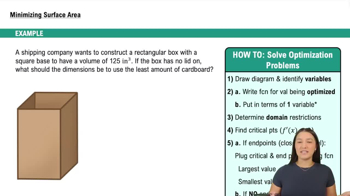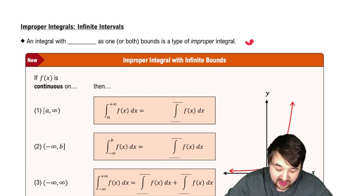Why is the disk method a special case of the general slicing method?
Table of contents
- 0. Functions7h 54m
- Introduction to Functions16m
- Piecewise Functions10m
- Properties of Functions9m
- Common Functions1h 8m
- Transformations5m
- Combining Functions27m
- Exponent rules32m
- Exponential Functions28m
- Logarithmic Functions24m
- Properties of Logarithms36m
- Exponential & Logarithmic Equations35m
- Introduction to Trigonometric Functions38m
- Graphs of Trigonometric Functions44m
- Trigonometric Identities47m
- Inverse Trigonometric Functions48m
- 1. Limits and Continuity2h 2m
- 2. Intro to Derivatives1h 33m
- 3. Techniques of Differentiation3h 18m
- 4. Applications of Derivatives2h 38m
- 5. Graphical Applications of Derivatives6h 2m
- 6. Derivatives of Inverse, Exponential, & Logarithmic Functions2h 37m
- 7. Antiderivatives & Indefinite Integrals1h 26m
- 8. Definite Integrals4h 44m
- 9. Graphical Applications of Integrals2h 27m
- 10. Physics Applications of Integrals 3h 16m
- 11. Integrals of Inverse, Exponential, & Logarithmic Functions2h 34m
- 12. Techniques of Integration7h 41m
- 13. Intro to Differential Equations2h 55m
- 14. Sequences & Series5h 36m
- 15. Power Series2h 19m
- 16. Parametric Equations & Polar Coordinates7h 58m
9. Graphical Applications of Integrals
Introduction to Volume & Disk Method
Problem 6.6.31
Textbook Question
Find the area of the surface generated when the given curve is revolved about the given axis.
y=x^3/2−x^1/2 / 3, for 1≤x≤2; about the x-axis
 Verified step by step guidance
Verified step by step guidance1
Identify the given function and the interval: The curve is given by \(y = \frac{x^{3/2} - x^{1/2}}{3}\) for \$1 \leq x \leq 2$, and it is revolved about the x-axis.
Recall the formula for the surface area of a curve revolved about the x-axis:
\(S = \int_a^b 2\pi y \sqrt{1 + \left(\frac{dy}{dx}\right)^2} \, dx\),
where \(y\) is the function and \(\frac{dy}{dx}\) is its derivative.
Compute the derivative \(\frac{dy}{dx}\) of the function:
First, rewrite \(y\) as \(y = \frac{1}{3} x^{3/2} - \frac{1}{3} x^{1/2}\).
Then, differentiate term-by-term using the power rule.
Substitute \(y\) and \(\frac{dy}{dx}\) into the surface area integral formula:
\(S = \int_1^2 2\pi \left( \frac{x^{3/2} - x^{1/2}}{3} \right) \sqrt{1 + \left( \frac{dy}{dx} \right)^2} \, dx\).
Set up the integral for evaluation or numerical approximation as needed to find the surface area.
 Verified video answer for a similar problem:
Verified video answer for a similar problem:This video solution was recommended by our tutors as helpful for the problem above
Video duration:
6mPlay a video:
Was this helpful?
Key Concepts
Here are the essential concepts you must grasp in order to answer the question correctly.
Surface Area of Revolution
The surface area of a solid formed by revolving a curve around an axis is found using an integral formula. For revolution about the x-axis, the formula is S = ∫ 2πy √(1 + (dy/dx)²) dx over the given interval. This calculates the total area of the curved surface generated.
Recommended video:

Example 1: Minimizing Surface Area
Derivative of the Function
To apply the surface area formula, you need the derivative dy/dx of the given function y(x). The derivative measures the slope of the curve at each point, which is essential for computing the arc length element √(1 + (dy/dx)²) in the integral.
Recommended video:

Derivatives of Other Trig Functions
Integration over the Given Interval
After setting up the integral for surface area, you must evaluate it over the specified interval [1, 2]. This involves integrating the function 2πy √(1 + (dy/dx)²) with respect to x from 1 to 2 to find the exact surface area.
Recommended video:

Improper Integrals: Infinite Intervals

 5:38m
5:38mWatch next
Master Introduction to Cross Sections with a bite sized video explanation from Patrick
Start learningRelated Videos
Related Practice
Textbook Question
20
views
